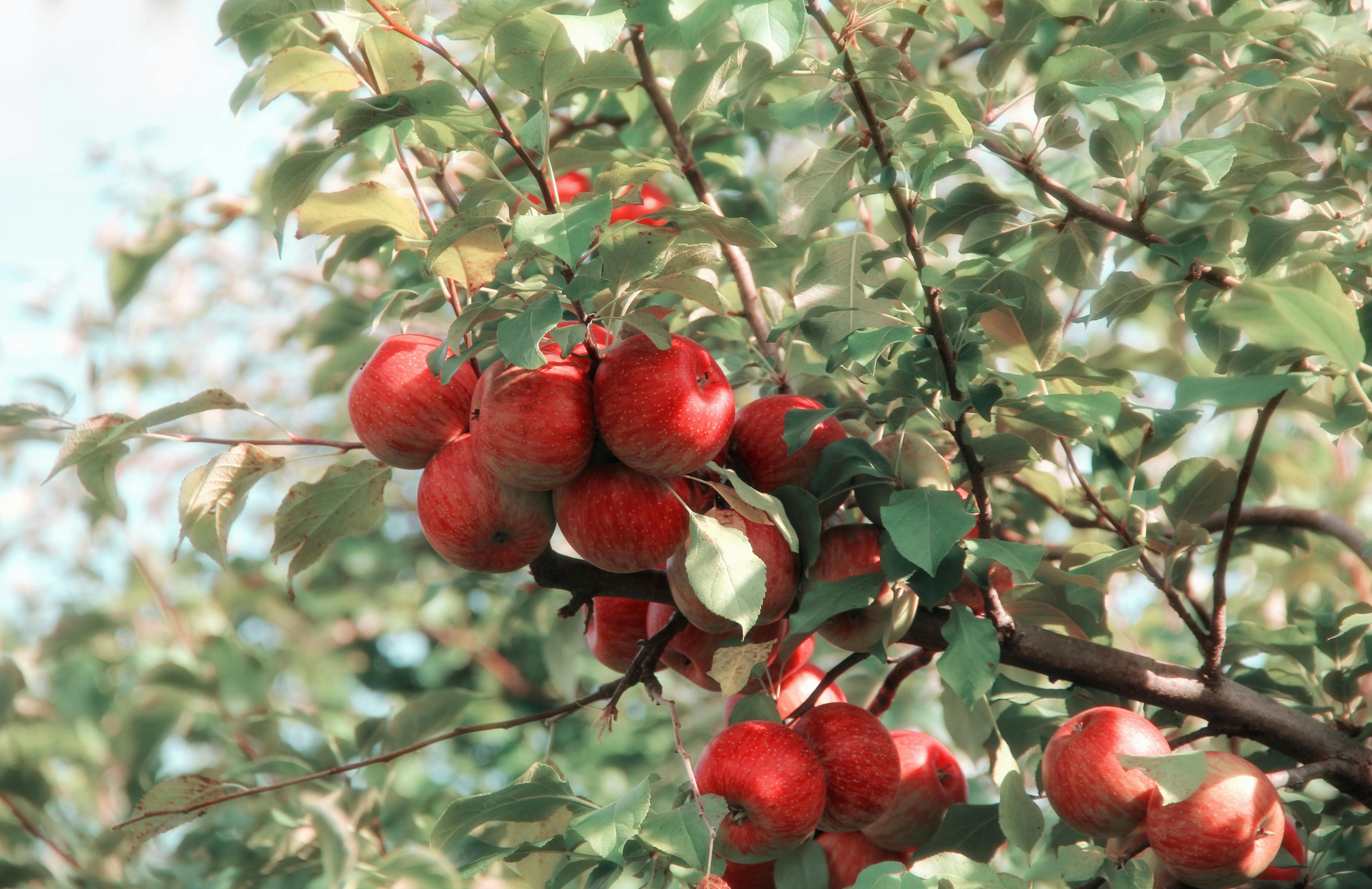Soursop is an exotic tropical fruit that can be grown at home with some patience and dedication. In this article, we will discuss how to make a soursop tree bear fruits. First, we will talk about the ideal conditions needed for soursop to thrive, then we will discuss the necessary steps to ensure your soursop trees bear fruits. Lastly, we will provide some tips on how to care for your soursop trees and maximize their productivity. With these helpful tips, you should have no problem getting your soursop tree to bear fruits!In order for a soursop tree to bear fruit, it must be grown in a warm, humid climate with temperatures ranging from 65-90°F (18-32°C). It requires full sun and well-draining soil with a pH of 5.5-7.0. The tree needs to be regularly watered and fertilized during the growing season; however, too much water or fertilizer can cause the tree to drop its fruit prematurely. Additionally, in order for the soursop tree to bear fruit, it must be pollinated by bees or another form of pollination such as hand-pollination.
Planting a Soursop Tree
Soursop trees are native to tropical climates, and thrive best in USDA plant hardiness zones 10 and 11. When planting a soursop tree, it is important to find an area that gets plenty of sunlight and has well-draining soil. The tree should be planted in a hole twice the size of the root ball, and backfilled with soil amended with organic matter such as manure or compost. After planting, the soil should be kept moist but not soggy.
Caring for a Soursop Tree
Once established, soursop trees are fairly easy to care for. They require regular watering, especially during dry spells. Mulching around the base of the tree can help retain moisture in the soil. The tree should also be fertilized in early spring with an all-purpose fertilizer or one specially formulated for fruit trees. Pruning is not usually necessary unless you wish to control the shape of the tree or thin out branches that may be blocking sunlight from reaching other parts of the tree. Pests may occasionally attack soursop trees, but these can typically be treated with an insecticidal soap or horticultural oil spray.
Harvesting Soursop Fruit
Soursop fruits typically ripen anywhere from four to eight months after flowering takes place. Fruits are ready for harvest when they turn yellowish-green and have a fragrant aroma. Ripe fruits should be gently plucked from the tree, taking care not to damage any surrounding branches or twigs. Once harvested, fruits can last up to two weeks if stored at room temperature or up to four weeks if refrigerated.
With proper care and attention, soursop trees can produce delicious fruits for years to come!
How to Fertilize Soursop Trees for Optimal Growth
Fertilizing soursop trees helps ensure they have the proper nutrients they need to grow and produce a healthy crop. However, when it comes to fertilizing soursop trees, there are some important considerations to keep in mind. Knowing how much, when and what type of fertilizer is best for soursop trees is essential for optimal growth. Here are some tips on how to fertilize soursop trees for optimal growth:
The first thing you need to do when fertilizing soursop trees is determine what type of fertilizer is best for your tree. An all-purpose fertilizer containing nitrogen, phosphorus and potassium is usually sufficient for a healthy soursop tree. Additionally, you may want to consider adding iron or trace elements such as zinc or boron if your soil lacks these essential nutrients.
Once you’ve selected the right fertilizer, it’s important to apply it at the right time. The best time to fertilize soursop trees is in the spring before new growth appears, and again in early summer after the fruits have been harvested. You should also fertilize your tree every other month throughout the growing season.
When it comes to applying fertilizer, you should use a spreader that will evenly distribute the fertilizer around the base of the tree. Be sure not to over-fertilize as this can lead to nutrient burn or even death of your tree. A good rule of thumb is to use half as much fertilizer as recommended on the packaging.
Finally, be sure that your tree gets enough water after you’ve applied fertilizer. Water helps dissolve and absorb nutrients so that they can be taken up by roots more efficiently. Give your tree 1 inch of water per week during dry spells or periods of drought.
By following these tips on how to fertilize soursop trees for optimal growth, you can help ensure that your soursops will thrive and produce a healthy crop year after year.
Encouraging Pollination for Soursop Trees
Pollination is a vital process for the successful fruiting of soursop trees. In order to ensure proper pollination, there are a few steps that can be taken to encourage it. Here are some ways to encourage pollination for soursop trees:
1. Planting companion flowers near the soursop tree: Companion flowers attract pollinators such as bees, butterflies, and hummingbirds which help in the pollination of the soursop tree. Planting companion flowers will help in bringing in more pollinators and thus increasing the chances of successful pollination.
2. Providing food sources for pollinators: Pollinators need food sources in order to thrive and be able to carry out their functions properly. Providing food sources like nectar-rich flowers or sugar water can help attract more pollinators and promote successful pollination.
3. Minimizing pesticide use: Pesticides are known to harm beneficial insects like bees which are important for successful pollination. Minimizing or avoiding pesticide use can help keep beneficial insects alive and promote successful pollination of soursop trees.
4. Watering regularly: Soursop trees need regular watering in order to stay healthy and produce fruit successfully. Keeping the soil moist will also help attract more beneficial insects like bees which will aid in successful pollination of the soursop tree.
By following these steps, you can ensure that your soursop tree is properly pollinated and produces healthy fruit every year!
Pruning and Trimming a Soursop Tree
Pruning and trimming a soursop tree is an important part of maintaining its health. Pruning can help the tree to remain healthy and vigorous, while trimming the branches will help to keep it looking aesthetically pleasing. It is important to know the right techniques for pruning and trimming a soursop tree in order to ensure that it will continue to thrive. Here are some tips on how to prune and trim a soursop tree:
First, it is important to identify which branches need pruning or trimming. Branches that are growing too close together should be pruned so that they have enough space for air circulation. It is also important to remove any dead or diseased branches as these can spread infection throughout the tree. When removing dead or diseased branches, make sure to cut back at least 1 inch above the affected area and discard them properly.
Once you have identified which branches need pruning or trimming, it is time to start cutting. When using hand tools, make sure they are sharp so that you can make clean cuts without damaging healthy parts of the tree. If you are using power tools, be sure to wear safety gear such as goggles and earmuffs. Make sure not to cut too deeply into the branch as this can cause damage.
After cutting back any unhealthy or overly crowded branches, you should also shape your soursop tree by cutting away any excess foliage that could impede air circulation or sunlight. This will keep your soursop tree looking its best while also promoting healthy growth. Finally, after pruning your soursop tree, make sure to apply a layer of mulch around its base as this will help retain moisture during dry periods.
Following these tips should help you keep your soursop tree looking great while also keeping it healthy and strong for many years to come!

Diseases
Soursop trees are susceptible to a variety of diseases, including root rot, blight, and leaf spot. To prevent these diseases from taking hold, it is important to ensure the tree is planted in well-draining soil and watered only when necessary. Pruning off any dead or diseased branches can help keep the tree healthy. Additionally, it is important to regularly inspect the tree for any signs of disease or pest infestation. If any signs are present, they should be treated promptly with an appropriate fungicide or pesticide.
Pests
Soursop trees can also be affected by various pests, such as scale insects and aphids. These pests can weaken the tree and cause damage to its leaves and fruit. To prevent infestations, it is important to regularly check the tree for any signs of pests and treat them promptly with an appropriate insecticide. Additionally, it may be beneficial to use a horticultural oil spray on the tree in order to keep pests away. This should be done once or twice a year as part of regular maintenance.
Environmental Conditions
The environment in which a soursop tree is grown can greatly affect its fruit-bearing ability. Temperature, sunlight, and humidity are all important factors for a healthy soursop tree. Too little or too much of any of these can cause the tree to produce fewer fruits or even none at all. Additionally, extreme weather conditions such as severe frost or high winds can damage the flowers and reduce the number of fruits produced.
Soil Quality
The quality of the soil also plays an important role in a soursop tree’s ability to bear fruit. Soils that are poor in nutrients or have low pH levels can cause a soursop tree to produce fewer fruits. In addition, soils that are too wet or too dry can also lead to reduced fruit production. Therefore, it is important to ensure that the soil is well-drained and rich in organic matter in order to provide optimal conditions for the tree.
Pruning
Regular pruning of a soursop tree is essential for encouraging healthy growth and promoting fruit production. Pruning helps reduce overcrowding by removing dead and dying branches and leaves, thus increasing air circulation and allowing more sunlight to reach the lower parts of the tree. In addition, pruning helps control pest populations by reducing their hiding places.
Pollination
In order for a soursop tree to bear fruit, it must be pollinated by bees or other insects. This ensures that pollen from male flowers reaches female flowers so they can produce fruit. If there are not enough pollinators present in an area, then it may be necessary to hand-pollinate flowers in order for them to set fruit.
Fertilisation
The use of fertilisers is important for producing abundant fruits on a soursop tree. Fertilisers help provide essential nutrients such as nitrogen, phosphorus, and potassium which are necessary for healthy plant growth and development. It is best to use organic fertilisers such as compost or manure rather than synthetic fertilisers which contain potentially harmful chemicals.
Harvesting Fruits From Your Soursop Tree
Harvesting soursop fruits from your tree is a relatively easy process. The best time to harvest the fruit is when it has ripened in color, typically a yellow or greenish-yellow hue. If the fruit is still green, it will not be ripe enough to be harvested. To test for ripeness, gently press the skin of the fruit and if it yields slightly to your touch then it is ready for harvesting. The optimal harvesting time also depends on the type of soursop tree you have; different varieties ripen at different times.
Storing Fruits From Your Soursop Tree
Once you have harvested your soursop fruits, you should store them as soon as possible in a cool, dry place. If you are unable to consume all the fruits right away, they can be stored for up to a week in a refrigerator or up to three months in a freezer. If you wish to store them for longer than three months, they should be frozen first and then placed into an airtight container before being placed into the freezer. To ensure quality and freshness, make sure that all containers being used are clean and dry before storing the fruits. You can also add some pieces of lemon or lime into the container as these will help keep moisture out and help preserve your soursop fruit for longer periods of time.

Conclusion
Growing soursop tree is not difficult if you can provide it with proper care and attention. It requires regular watering and fertilizing, pruning, and protection from pests. With the right environment and care, a soursop tree can bear fruits in two to three years. The fruit is rich in vitamins and minerals, which can provide numerous health benefits. Additionally, its unique flavor makes it a popular choice for making drinks and desserts.
Therefore, soursop trees are a great addition to any garden or farm. It is relatively easy to grow them in tropical climates with the right environment and care. With proper nutrition and protection from pests, you will be able to enjoy the sweet taste of soursop fruits for many years to come.



